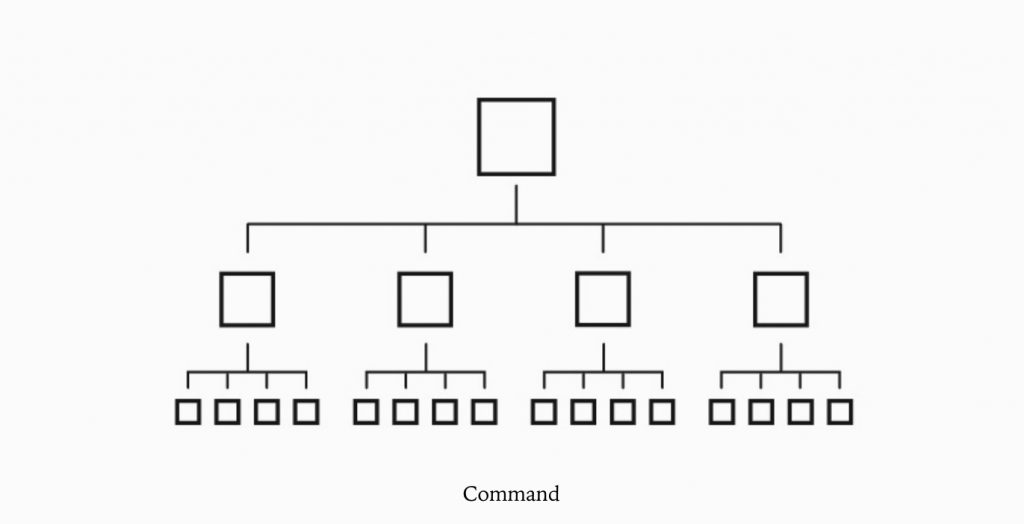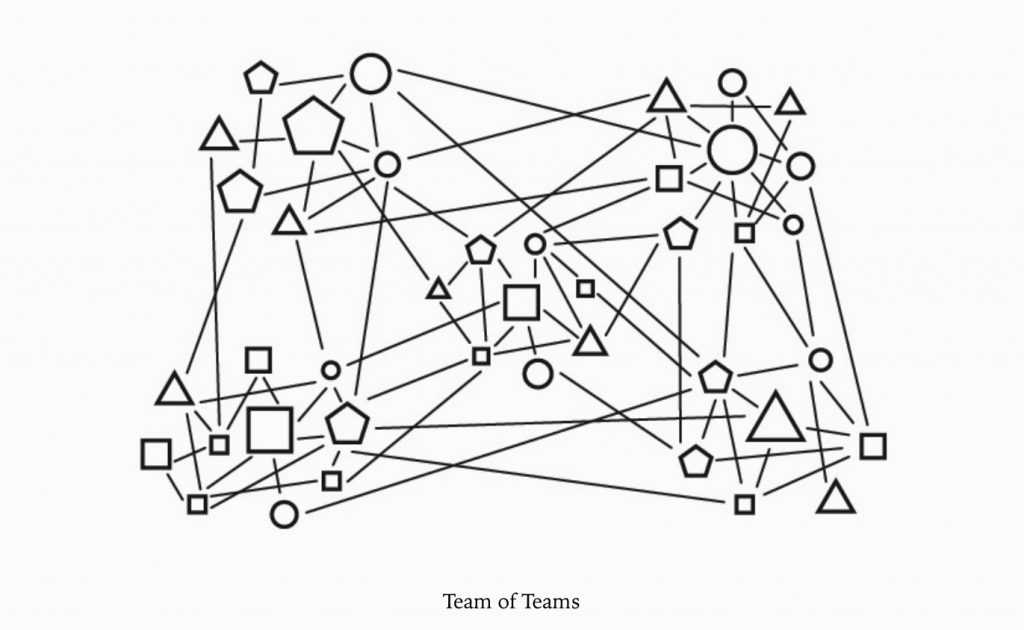At Mad Fish Digital, we have been fortunate to see steady growth year over year. In June 2017 we received the Portland Business Journal’s award for the 32nd fastest growing private company in Oregon. This is our second time in two years to have made the list, and with the evolving digital marketing industry I thought I’d break down the changes we’ve been making to achieve results.
Changing Our Traditional Structure
Up until mid-2016, we had a five-person executive team. We originally implemented the executive team in 2014 to help drive the goals developed from our annual strategic planning. However, by April 2016, we were beginning to fall short on goals and milestones.
By mid-2016, we made the decision to disband the executive team. We split the executive management responsibilities between us and our VP of Operations, and managed the business strategy decisions and implementation through the resources we had.
Before long, the three of us became choke points for nearly every decision in the organization. From campaign level approval to new optimization ideas, growth momentum was impacted by this bottleneck, and we noticed slowdowns similar to those we experienced with a flat structure.
We needed a solution, and needed one fast.
Introduction to the Team of Teams
In early October 2016, at EO Alchemy in Scottsdale, Arizona, I happened upon a presentation for Design Centric Leadership by Lex Sisney. In citing the difference of a “Top-down” vs. “Bottom-up” organizational design, Sisney referenced the book by General Stanley McChrystal called the “Team of Teams.” The twenty-minute presentation covered a few high level concepts from the book, but the general gist that I took away was simple. In 2004, the US Military was losing badly to Al-Qaeda in Iraq. Being the best equipped, best trained, and most elite fighting squad on the planet, our military was still having difficulty with an enemy (Al-Qaeda in Iraq) even though this enemy was technically outnumbered and out trained. This forced General McChrystal’s task force to take a hard look inward, and re-evaluate its age-old team structure, general practices, and communication flow.
From this inward look, McChrystal’s task force studied, analyzed, and developed a new(ish) team structure, a hierarchy completely counter to how they were structured at the time. I say “newish” because organizations like NASA and Ford Motors had successfully implemented a similar team structure which helped contribute to General McChrystal’s approach.
The original hierarchical structure that we are most familiar with is referred to as a “Command” structure (think upside down tree). In both the military and business sectors, this team structure was ideal for standardized processes that could be repeatedly followed and optimized. However, McChrystal explains that the idea of having a team member follow one process or function and ignore all else as noise around them, no longer was suitable or productive in this changing world and business climate. This standardization mentality does not account for the continued market disruption that nearly every industry today is experiencing.

General McChrysal refers to this hierarchical chain of command model as a reductionist approach. Keep in mind, that the Reductionist approach originated during a time when hand held devices were barely comprehendible and information access was easy to limit and stifle. This model was great for reducing waste in manufacturing (i.e. time, materials etc.), but was now proving ineffective against an enemy who had built a newer model in a post 9/11 world. Communication, data flow, and broader insight into the world around us had progressed to a fever pitch, and Al Qaeda in Iraq had embraced it. The US military Task Force recognized it, and after a lot of analysis, dedication, and hard work, could develop a new structure that addressed the disruption that the military and had been facing.
The structure that General McChrystal and the US Military developed is simply called the Team of Teams.

After watching the brief presentation I was intrigued. After reading the book, I was inspired.
General McChrystal’s rationale was that “The Technological advancements of the past 10-15 years have created a level of complexity and unpredictability never before seen in business, as well as the world around us.” General McChrystal’s further details at length that “this unpredictability is fundamentally incompatible with the reductionist management models based around planning and prediction. This new environment demands a new approach.”
While not only being a new approach, The “Team of Teams” structure addressed all of the root problems we at Mad Fish had been facing.
- It worked to remove bottlenecks from teams
- It broke down both data and communication silos (which exist in every business)
- It provided a clear understanding of career paths for employees
- It allowed for individuals of all levels and expertise to participate equally in decision making
- It focused on a structure which naturally positions an organization for adaptability in a market place surrounded by continuous disruption
Market disruption is occurring today in nearly every industry on a scale never before seen or understood in history. The same issues General McChrysal’s Task Force was facing in 2004 are being faced by modern businesses now, including my own. This is apparent across nearly all industries but is easy to see in spaces like ours where we work with so many different types of industries – ecommerce and retail, healthcare, travel, etc. With the increase and evolution of new technology and software platforms being introduced on a near daily basis, any industry not experiencing market disruption is on its way to extinction.
Implementing a New Structure
The Team of Teams approach serves to strengthen an organization, and works to eliminate the common “Us and Them” (infectious) mentality that can manifest between teams.
We were ready to try it. Our VP of Operations developed the ideal teams, their roles and responsibilities, and how the teams would scale as the company continued to grow over the next five years. We were even able to clearly detail the future roles that would be needed, so team members would know the opportunities that existed as they mastered their current team role.
These changes in structure, unfortunately, meant that some employees were faced with hard choices. If their role was no longer a part of the structure, deciding between moving to another part of the company or moving elsewhere were choices that had to be made. This part sucked.
We presented the company’s organization change to the entire staff in early November, detailing how job descriptions would be modified, the new roles that would be created, how teams would grow, and timelines for hiring. We then met with each team member individually and discussed the updates to their current roles and career path opportunities with each team member. Part of our goal was to make sure that each person was invested in the new team of teams model and that they would work just as hard to make it successful.
The new structure also initiated an office configuration change. Each team sat together in our open space so they could more easily collaborate with their peers and improve information and experience sharing.
Rolling out the new team structure had an unanticipated but welcome outcome. A new shot of team enthusiasm, previously not seen, had been injected into our company DNA. We were able to collaborate and work on innovative strategies without being hindered by bottlenecks or space.
Initial Progress
The new structure very quickly aided in removing the bottleneck of information occurring at the top. Teams were better able to troubleshoot issues and brainstorm ideas and solutions without the need to up level them to the executives. Working with each team collaboratively, we could give all staff members a voice in how their services could evolve, be improved or expanded. From Design to Pay-Per-Click advertising, the Mad Fish team was able to see where we were going and how they fit into the long-term direction of the company. One of the challenges not immediately solved by the transition was the removal of information silos. More work was needed to fully remove that barrier.
Conclusion
In cases where there were 3-4 people with the same role, grouping them into teams was straight forward.
- In the cases where people had a role that touched multiple teams, but did not identify with any specific team, a team and plan for growth was created around their roles, and the roles required for support over the next five years.
- The minor rumblings of the “Us and Them” attitude can be pervasive in all team members. Everything from project scheduling to proximity of desks can serve to perpetuate the potential for new silos. Breaking down the potential for silos is an on-going process, and should be an element of a company’s DNA rather than a box to check.

